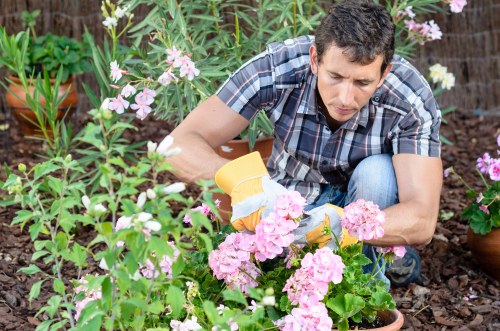Gardeners Maryland: Cultivating Green Thumbs in the Old Line State

Maryland, known for its diverse landscapes and rich gardening heritage, is a haven for both amateur and professional gardeners. Whether you're tending to a small balcony garden in Baltimore or managing a sprawling estate in Howard County, Maryland offers unique opportunities and challenges for gardening enthusiasts.
Understanding the local climate is essential for successful gardening in Maryland. The state experiences a humid subtropical climate, characterized by hot summers and cold winters. This climate supports a wide variety of plants, from vibrant perennials and delicate annuals to robust vegetables and fragrant herbs.
Soil quality varies across the state, with coastal areas benefiting from sandy soils while inland regions boast rich, loamy earth. Gardeners Maryland can take advantage of these diverse soil types by selecting appropriate plants and employing soil amendments to enhance fertility and drainage.

Popular Gardening Techniques in Maryland
Gardeners in Maryland often utilize a mix of traditional and modern gardening techniques to maximize their garden's potential. Raised beds are particularly popular, allowing for better soil control and drainage, which is crucial in areas prone to heavy rainfall.
Companion planting is another favored method, where plants are strategically placed together to enhance growth and deter pests naturally. For instance, marigolds are often planted alongside vegetables to repel insects, promoting a healthier garden ecosystem.
Additionally, organic gardening practices are widely embraced. Maryland gardeners prioritize using natural fertilizers and avoiding synthetic pesticides, ensuring their gardens are both eco-friendly and safe for the community.

Essential Plants for Maryland Gardens
Choosing the right plants is key to a thriving Maryland garden. Some of the most beloved plants include:
- Black-eyed Susans: These hardy perennials add a splash of color and are tolerant of various soil types.
- Hostas: Ideal for shaded areas, hostas provide lush foliage and subtle flowers.
- Tomatoes: A staple in vegetable gardens, Maryland's climate is perfect for growing juicy, flavorful tomatoes.
- Lavender: Known for its fragrance and beauty, lavender thrives in Maryland's sunny spots.
- Herbs: Basil, mint, and rosemary are favorites, offering both culinary and ornamental benefits.
By selecting these and other suitable plants, gardeners Maryland can create a vibrant and productive garden year-round.

Seasonal Gardening in Maryland
Maryland's distinct seasons offer unique gardening opportunities and challenges. In the spring, gardeners focus on planting new beds and nurturing early blooms. Summer requires diligent watering and pest management to keep plants healthy under the heat.
Fall is the time for harvesting and preparing the garden for winter. This involves planting cover crops, mulching, and pruning to ensure plants survive the cold months. Winter gardening might include indoor plant care and planning for the next growing season.
Understanding and adapting to each season allows gardeners Maryland to maintain a thriving garden throughout the year.

Community and Resources for Maryland Gardeners
Maryland boasts a strong community of gardeners who share knowledge and resources. Local gardening clubs, community gardens, and online forums provide platforms for enthusiasts to exchange tips, seeds, and encouragement.
Additionally, numerous nurseries and garden centers across the state offer a wide selection of plants and expert advice tailored to Maryland's specific gardening conditions. Extension services and workshops are also available, helping gardeners enhance their skills and stay updated on best practices.
Participating in these communities fosters a supportive environment where Maryland gardeners can flourish together.
Nearby Areas to Maryland for Gardeners
Gardeners Maryland isn't limited to just the state itself. Surrounding areas offer additional opportunities and unique gardening experiences:
- West Virginia: Just west of Maryland, West Virginia's mountainous terrain provides a different set of gardening challenges and plant varieties.
- Virginia: South of Maryland, Virginia's climate and soil conditions are ideal for a wide range of gardens, from coastal to inland.
- Pennsylvania: North of Maryland, Pennsylvania offers rich soils and a temperate climate perfect for diverse plantings.
- Delaware: Southeast of Maryland, Delaware's coastal gardens benefit from milder winters and ocean breezes.
- New Jersey: Northeast of Maryland, New Jersey's varied landscapes support both ornamental and vegetable gardening.
- Washington D.C.: Directly south, D.C. provides urban gardening opportunities and access to prestigious botanical gardens.
- Westminster, MD: A nearby Maryland area with fertile land and a strong gardening community.
- Frederick, MD: Known for its historic gardens and active horticultural society.
- Baltimore, MD: As a major city, Baltimore offers numerous community gardens and urban gardening resources.
- Silver Spring, MD: Close to Maryland's capital, Silver Spring has vibrant green spaces and gardening programs.
- Gaithersburg, MD: A suburban area with extensive parklands and gardening initiatives.
- Monrovia, MD: Known for its scenic gardens and active gardening clubs.
- Ellicott City, MD: Offers a mix of historic and modern gardening practices.
- Timonium, MD: Features community-supported gardens and local nurseries.
- Columbia, MD: Renowned for its planned communities and well-maintained gardens.
Conclusion
Gardeners Maryland thrive by embracing the state's diverse climates, soils, and seasons. With access to a supportive community and a wealth of resources, both novice and experienced gardeners can cultivate beautiful, productive gardens. Whether you're nurturing a small urban garden or managing a large rural plot, Maryland provides the perfect backdrop for your gardening journey.
Frequently Asked Questions
1. What are the best plants for Maryland gardens?
Some of the best plants for Maryland gardens include black-eyed Susans, hostas, tomatoes, lavender, and various herbs like basil and rosemary. These plants thrive in Maryland's climate and soil conditions.
2. How can I improve soil quality in Maryland?
Improving soil quality can involve adding organic matter such as compost, using raised beds for better drainage, and selecting plants that suit your specific soil type. Conducting soil tests can also help determine necessary amendments.
3. What are common gardening challenges in Maryland?
Common challenges include managing pests and diseases, dealing with varying weather conditions, and ensuring adequate watering during hot summers. Employing natural pest control methods and choosing resilient plant varieties can help mitigate these issues.
4. Are there community gardening resources available in Maryland?
Yes, Maryland has numerous community gardens, gardening clubs, and online forums where gardeners can share tips, resources, and support. Local nurseries and extension services also offer workshops and expert advice.
5. When is the best time to plant in Maryland?
The best time to plant depends on the type of plants. Generally, spring is ideal for most annuals and vegetables, while fall is suitable for planting perennials and preparing gardens for winter. It's important to consider the specific needs of each plant.


